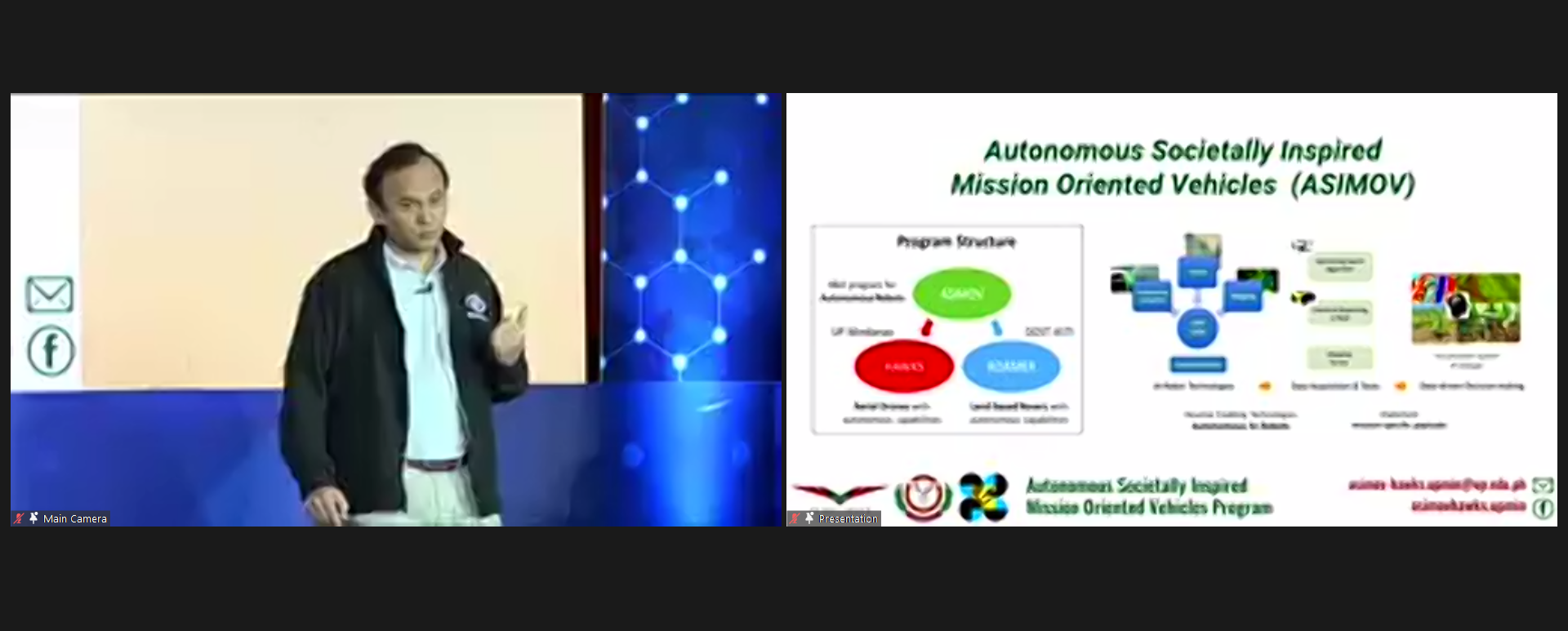Artificial Intelligence programs updates, 2022

University of the Philippines Mindanao's (UPMin) Professor Jose Ildefonso Rubrico reported that nearly 2 million features from aerial images have been labeled, and core modules for self-operating vehicles are under development under two Artificial Intelligence (AI) research programs on the campus.
Professor Rubrico gave these and other updates as program leader of the Philippine Sky Artificial Intelligence Program (SkAI–Pinas) and the Autonomous Societally Inspired Mission Oriented Vehicles (ASIMOV) at the 7th National Research & Development Conference held at the Philippine International Convention Center on September 16, 2022.
“The Philippines has amassed big data from flood hazard and resource maps which are underutilized and remain in archives. SkAI-Pinas seeks to activate this data for the widespread use of Filipinos,” he said.
“After almost a year of implementation, SkAI–Pinas—officially commenced in October 2021 for a three-year implementation period—has labeled features from aerial images, completed computer vision-related training for its research staff and 36 students from four schools,” he said.
“We have trained AI models based on satellite imagery, and the AI library containing labeled images has also begun development with a network of trained experts.
These accomplishments from the SkAI-Pinas program can equip AI professionals to develop many applications, ranging from automated tree cover analysis, traffic density estimation, management of crops like bananas or sugarcane, and related structures like fish ponds and salt farms, among others,” he said.
In the ASIMOV program, Prof. Rubrico reported that agreements were signed with seven industry organizations and educational institutions, and 47 high school and college students were trained since the start of its three-year program in June 2021.
The ASIMOV focuses on the development of core modules for land and air transport devices, such as drones, that can operate with minimal human supervision.
“The vision, independent navigation, communications, and mapping modules are underway, and initial results have been derived.
The core modules can be used for applications for search and rescue, mining, construction, and road works. It can also do specific tasks specific to an application area, like precision aerial spraying and the detection of disease in agriculture and banana plantations.
The Philippine government, through the DOST, has shown its commitment to harnessing AI by funding research projects that use AI to solve problems in various application areas,” he said.
“The Artificial Intelligence (AI) revolution is upon us,” he said.
